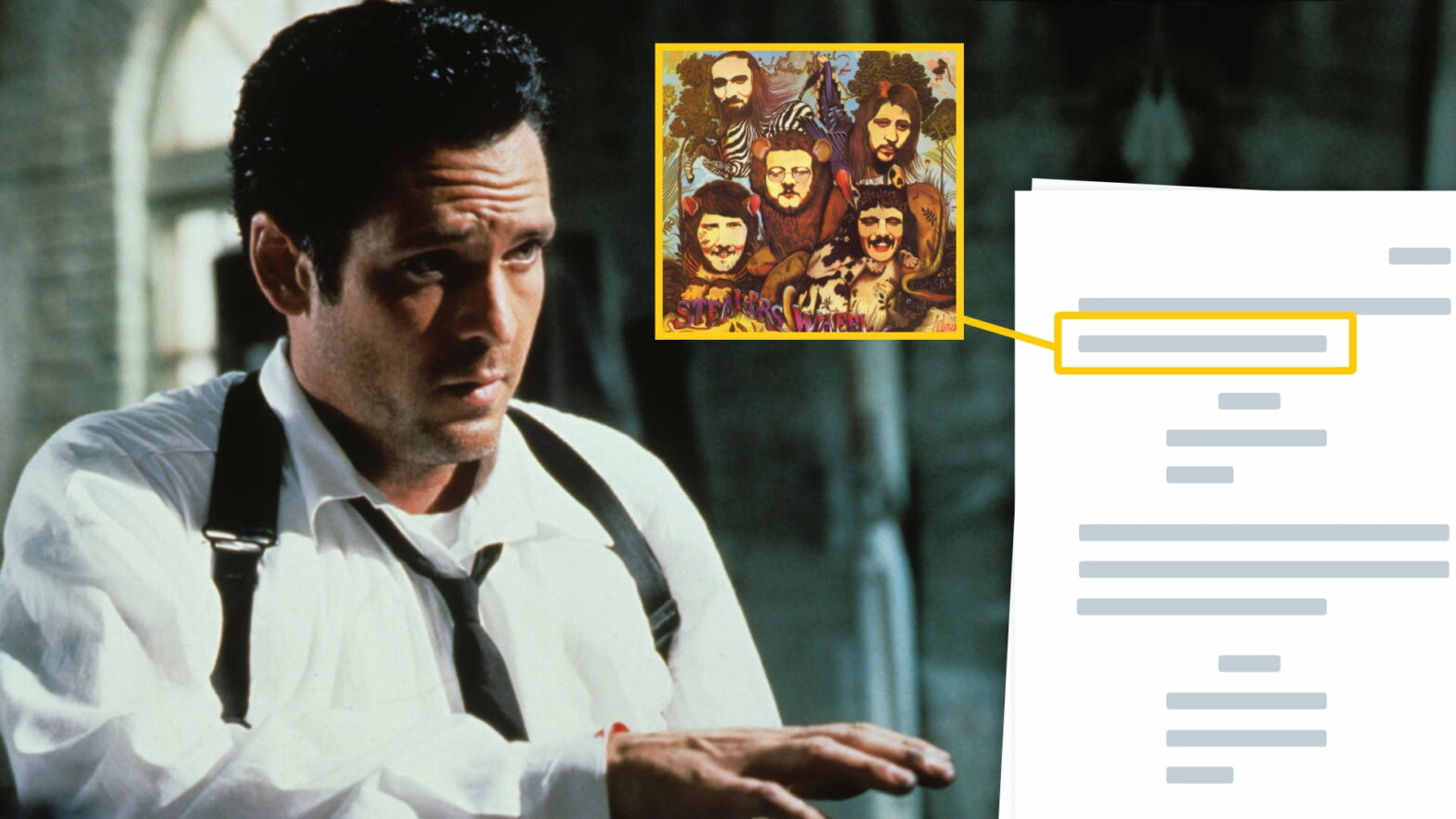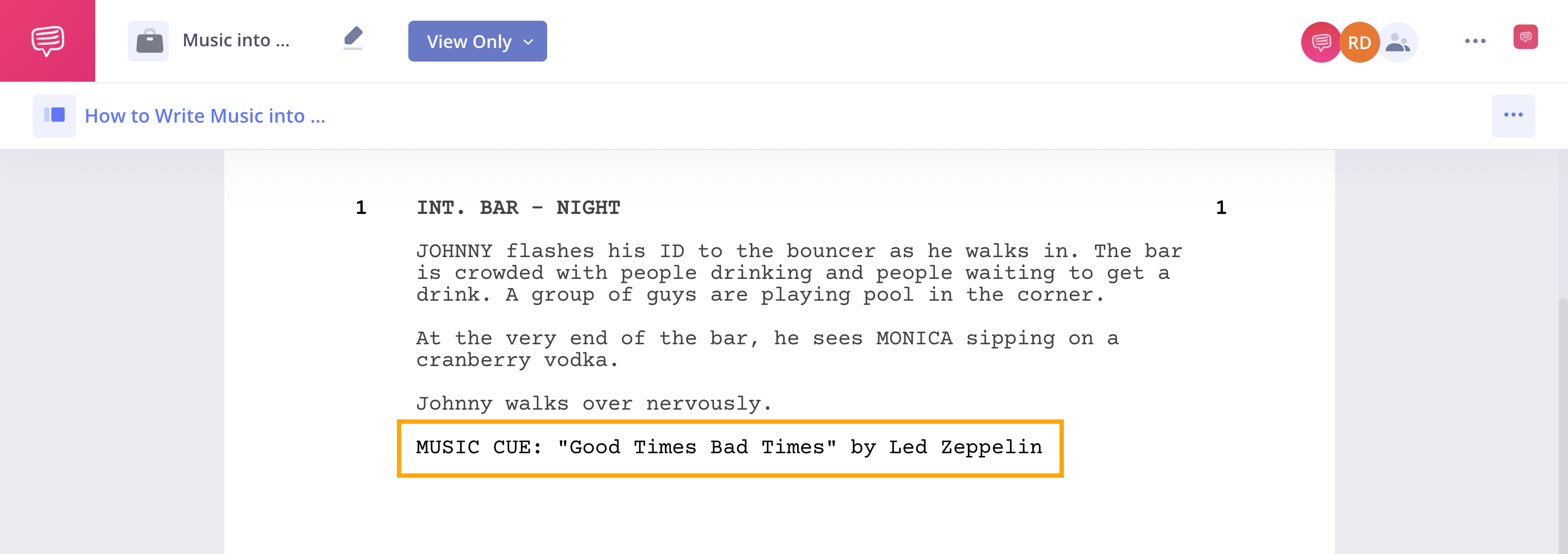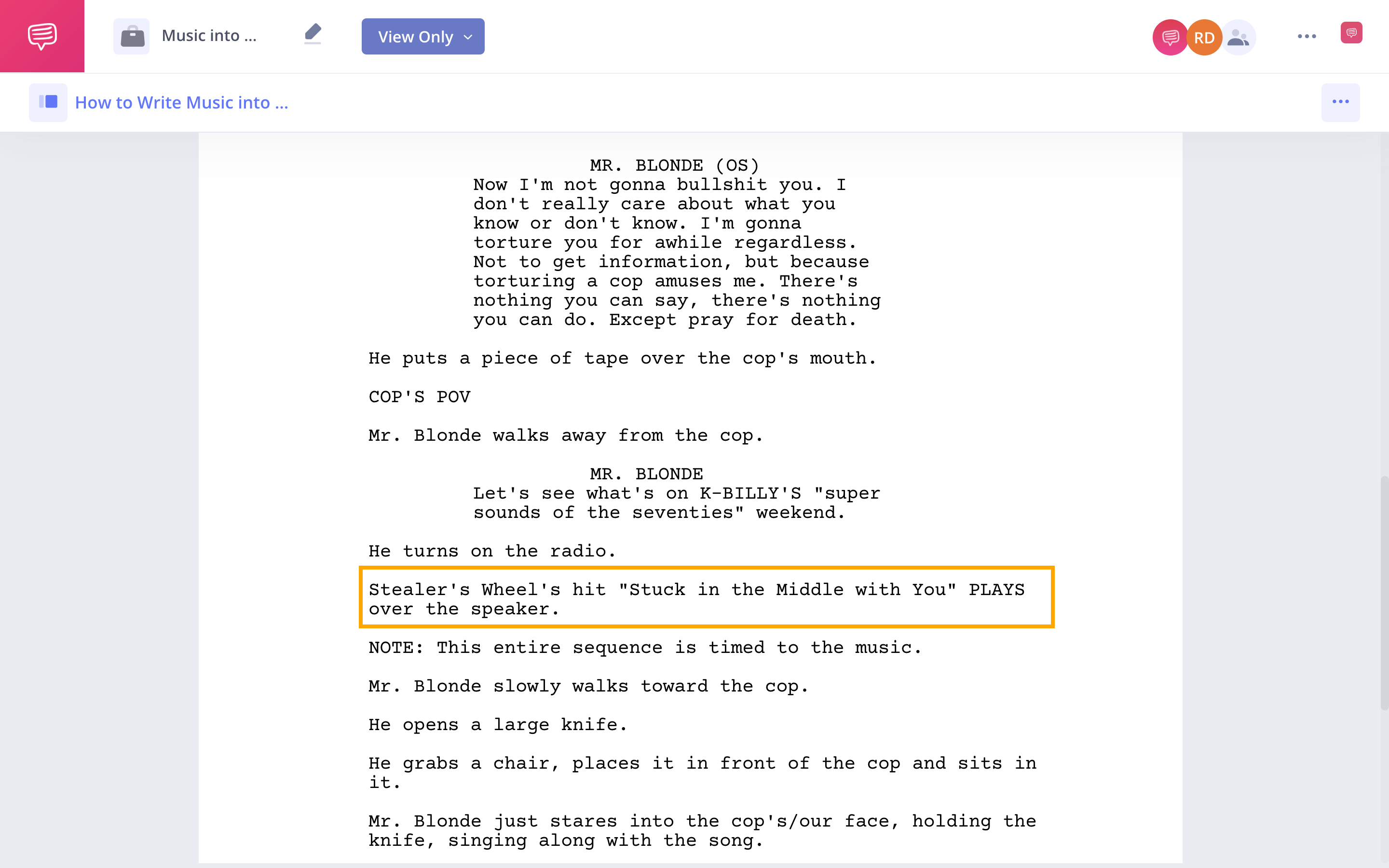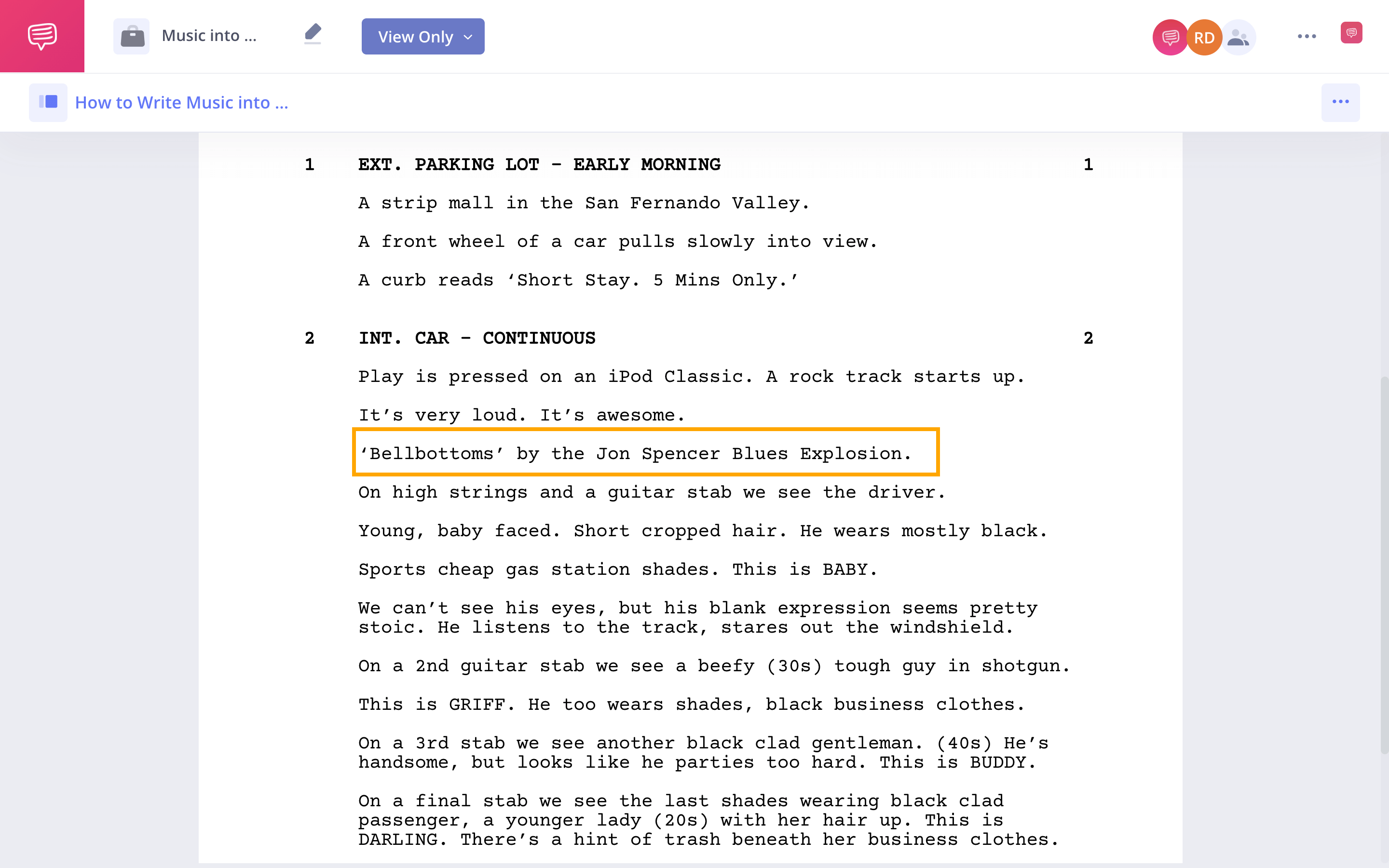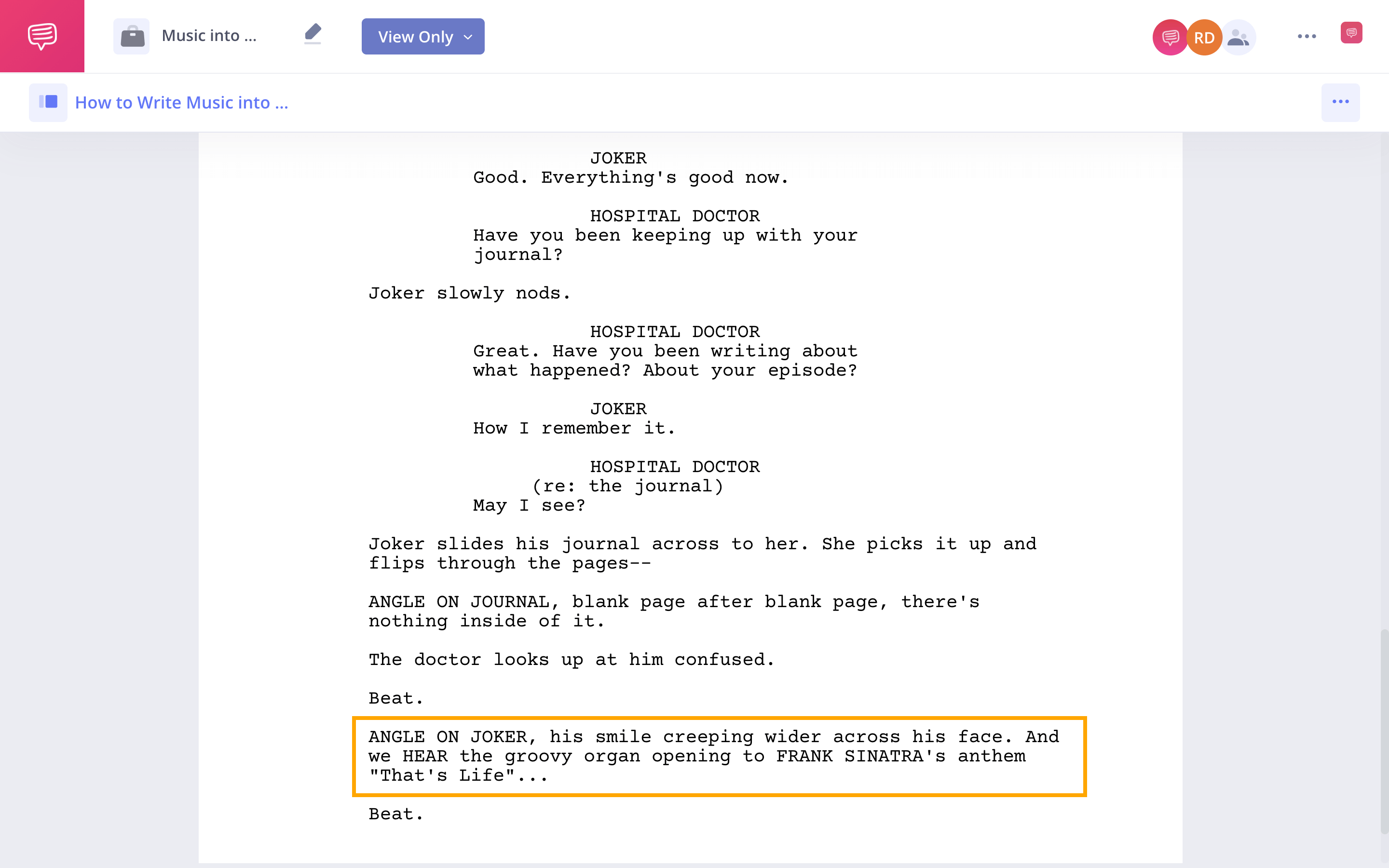While cinema is known for being a primarily visual medium, there is no doubt how much of an impact music can have on a film. Some of the most iconic scenes in history are remembered with a song attached. Sometimes the music choices are left to a director far after the screenplay is written. However, other times music is baked into the screenplay itself and how a scene may operate. In this article, you’ll learn when and how to write music into a screenplay so that you can create unforgettable scenes through music.
How to Write Music into a Screenplay
How to write a song playing in a script
Just like most screenplay formatting techniques, there is more than one way to write music into a screenplay as long as you are clear to the reader with what is being communicated and consistent with your formatting techniques.
We created an example using the free StudioBinder screenwriting software simplest to show you the simplest way to denote music into a script.
First, create a new line of action description by clicking the “Action” icon on the top toolbar.

How to Write Music into a Screenplay
Next, in all capitalized letters write: “MUSIC CUE:”
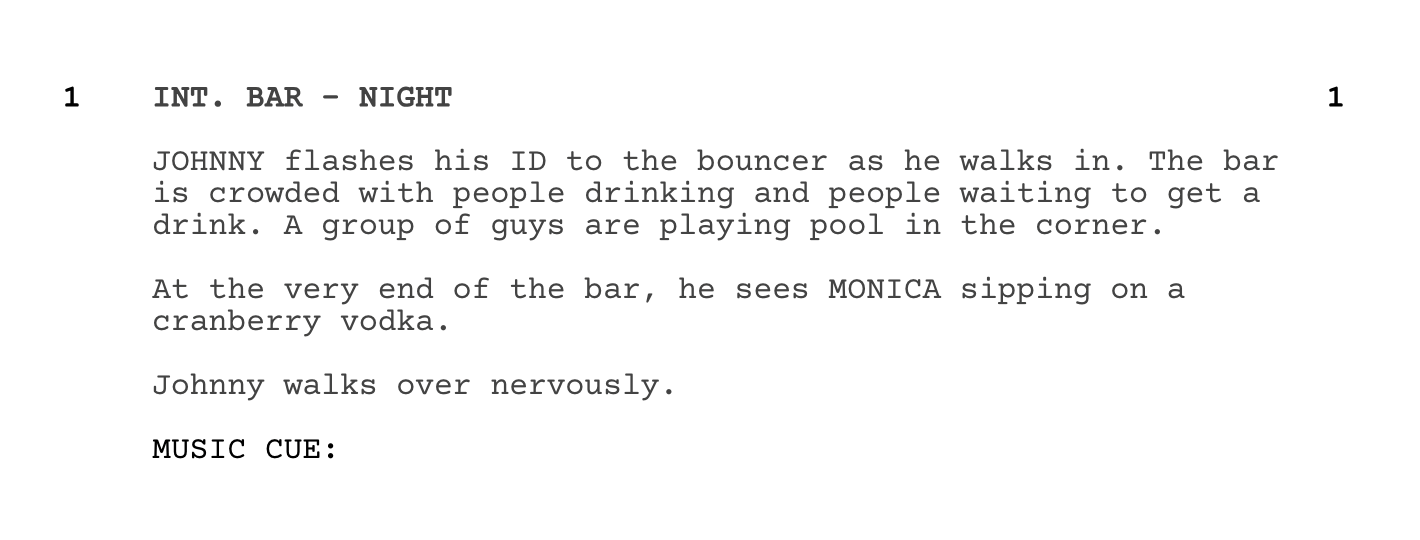
Music cues in screenplay
Lastly, write the name of the song in quotation marks followed by the name of the artist.
How to Write Music into a Screenplay
This is one of the most straightforward ways to write music into a script. But before you jump into using this technique to write music in every scene of your screenplay, it's incredibly important to first understand when it is necessary to write music into a script in the first place.
Using music cues in screenplay
Only write music if it’s essential
There are various reasons as to why it might not be a good idea to write music into your screenplay. Most of them are for logistical reasons. You may run into potential legal issues if you plan to copyright your script.
It can be a nightmare for producers depending on the cost to use the song. It can make your script harder to sell because the use of music immediately drives up production costs.
And possibly the biggest reason not to write music cues in screenplay is that it is ultimately the director’s decision and can either interfere with the director’s vision or could be cut out all together.
To find out whether or not writing music in script is absolutely essential, it is helpful to take a look at a few examples that have proved the necessity of music in the script. Also note that different methods used to write music into these scripts are just as effective.
Music cues in screenplay example
Diegetic music in Reservoir Dogs
Quentin Tarantino is known for his masterful understanding of how to create unforgettable scenes with music. And one of the ways he does this is by using diegetic music, or music that characters can hear in the film’s world.
Here's a quick rundown of how diegetic sound works.
Diegetic Sound Explained • Subscribe on YouTube
Because diegetic music interacts with the characters of a film, writing it into a script is essential. Take this iconic scene from Reservoir Dogs for examples, which we think is one of the best uses of music in all of Tarantino’s work.
In this scene, the character Mr. Blonde is left alone with the kidnapped cop. What ensues establishes the psychotic nature of Mr. Blonde.
Music in Reservoir Dogs • Read Full Scene
Tarantino has talked in interviews about how the song “Stuck in the Middle With You” was a perfect marriage for this scene and was essential to include when writing the scene out.
To understand just how important music is to Tarantino’s films as well as his creative process, check out our video. Here, we analyze different ways Tarantino uses music to create unforgettable moments.
Why Quentin Tarantino's Music Defies All Expectations • Subscribe on YouTube
Music Cues in Screenplay Example
Auteurism in Baby Driver
When writer and director Edgar Wright sent copies of the Baby Driver screenplay to actors, he attached a thumb drive with the music of the script to it. This is because an auteur filmmaker like Wright, has a very precise vision of the film he is trying to create.
The idea of the film, according to Wright, was heavily inspired by and written to music and was thus essential to include within the screenplay. In fact, the entire opening segment not only denotes the music, but also segments of the song in which specific actions occur.
Music in Baby Driver Screenplay • Read Full Scene
Compare this opening segment of the script with the actual opening scene and you’ll notice the incredible precision in execution by Edgar Wright. This is a perfect example of an auteurist vision coming to life and proves the necessity of denoting the music in the actual script.
This video by Thomas Flight breaks down the use of music in the opening scene and how it makes this scene so memorable.
How Edgar Wright Sets Up Baby Driver • Music cues in screenplay example
How to Write Music into a Screenplay
Thematic resonance in Joker
The song “That’s Life” by Frank Sinatra is used more than just one time throughout the Joker screenplay. In fact, not only is the song used thematically, but the lyric “That’s life” is actually used as Murray Franklin’s sign off catch phrase.
So, including the song in the screenplay itself was very important thematically. The song is used at the end of the film to create a sense of closure as well as to underscore the theme of Arthur turning his life into a cynical, dark comedy rather than a tragedy.
Music in a Joker Screenplay • Read Full Scene
From script to screen, this scene does change a little by having Arthur sing a few lines of the song. This creative decision proves how necessary the song was in tying together the theme of the film.
Joker • Music cues in screenplay example
Music has been responsible for creating some of the most iconic scenes in cinema. It can greatly underscore a tone and be used to completely engage an audience into a scene. It is important for every screenwriter to know how to format a specific song into a script as well as when it is essential to even write music into the screenplay.
Reading the screenplays of major feature films and noting when a song is written onto the page will help you get a better understanding of music that should be used when writing a screenplay.
UP NEXT
The Best Tarantino Movie Songs
There is no doubt that Tarantino creates some of the best film soundtracks in cinema. The music he chooses is arguably just as impactful on the tone and style of his films as the cinematography is. Check out the list we’ve compiled of the best Quentin Tarantino songs used in his movies to see how a master chooses the music for his films.
